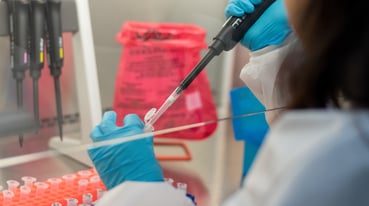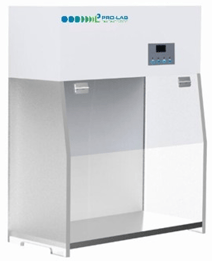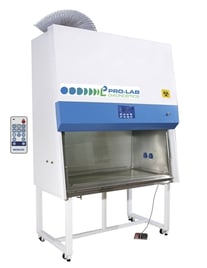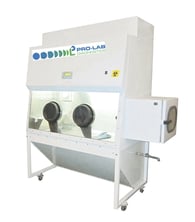
Biosafety cabinets (BSCs) are essential hardware for any laboratory that handles biological materials. Despite their ubiquity, significant confusion exists surrounding how they function due to the variety of designs and similarities to other lab fixtures. Moreover, each class of BSCs has its operating principles that must be understood before use.
Many users' main point of confusion is that BSCs superficially resemble laboratory fume hoods. Unlike BSCs, fume hoods are designed to protect the user. In contrast, BSCs can protect the user, environment, and sample, depending on the class. There are four main classes of biosafety cabinets, each providing an additional degree of protection
.
PLS101 - Pro-Safe Class I Biosafety Cabinet (2.3ft.)
Class I BSCs pull air from the room around them into the work area, preventing the escape of potentially hazardous particulate matter into the lab atmosphere. Unlike fume hoods, which vent air directly into air systems without filtration, Class I BSCs protect the environment by filtering all exhaust through a HEPA filter. However, it is important to note that Class I BSCs do not protect samples from contamination; non-purified air from the external room is constantly vented through the workspace. Our Pro-Safe Class I Biosafety Cabinet provides optimal filtration in several sizes to fit any lab space and comes packaged with LED and UV lamps for visibility and hygiene.

PLS225 - Pro-Safe Class II Biosafety Cabinet
Although personnel safety is first and foremost, many samples are prone to contamination from the user or outside environment. These materials are best used with Class II BSCs, which add another level of protection. In addition to the user and environment, Class II BSCs protect the materials within by preventing the entry of unfiltered external air into the primary workspace.
There are several subtypes of Class II BSCs, of which A2 and B2 are offered by Pro-Lab. The key difference is the percentage of air recirculated through the device. While Class II A2 BSCs will refilter and recirculate up to 70% of the air flowing through them, all air going through a Class II B2 BSC must be exhausted through a HEPA filter without recirculation. As a result, Class II A2 BSCs are more suited for applications using only small amounts of hazardous compounds and radionuclides, while Class II B2 BSCs can handle both in larger quantities. Pro-Lab has several offerings of both subtypes in its Pro-Safe line of BSCs.

PLS301 - Pro-Safe Class III Biosafety Cabinet
Class III BSCs are at the upper limit of bio lab safety; only Class IV biosafety rooms are more secure. A Class III BSC is an airtight cabinet with attached rubber gloves that allow users to manipulate its contents without any chance of exposure. Air coming in is HEPA filtered, while air coming out is double HEPA-filtered or incinerated. These cabinets are meant for extremely hazardous pathogens or compounds and can be used in labs of all biosafety levels. Our Pro-Safe Class III Biosafety cabinet offers top-of-the-line safety features and user comfort. Performing research on cutting-edge biosciences comes with inherent risks, but don't let safety be one of those.
Contact Pro-Lab diagnostics today to learn more about our BSCs and other research solutions!


